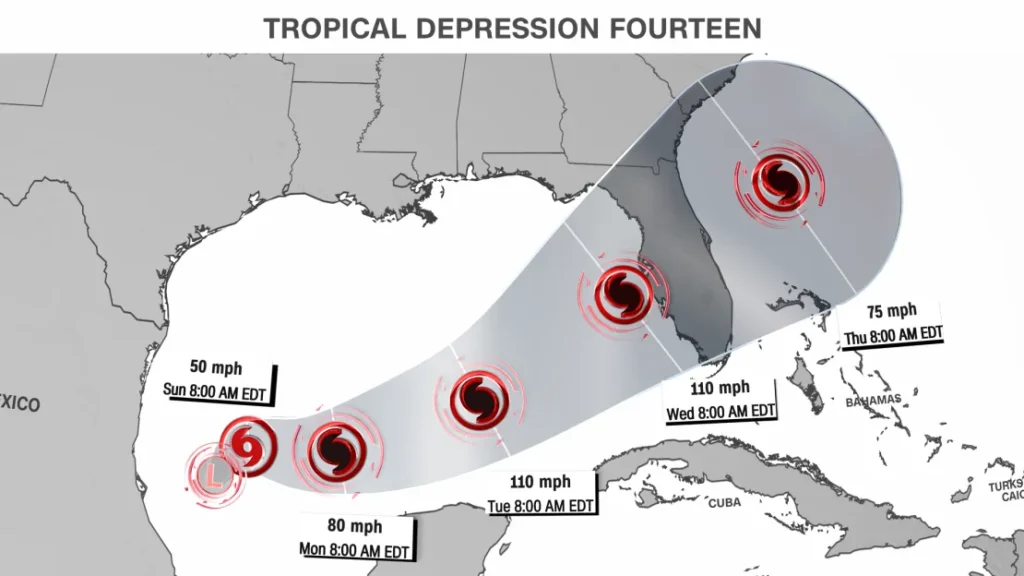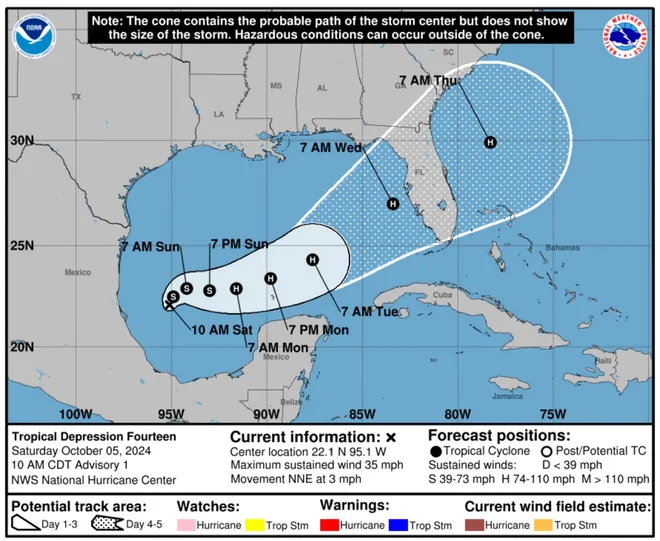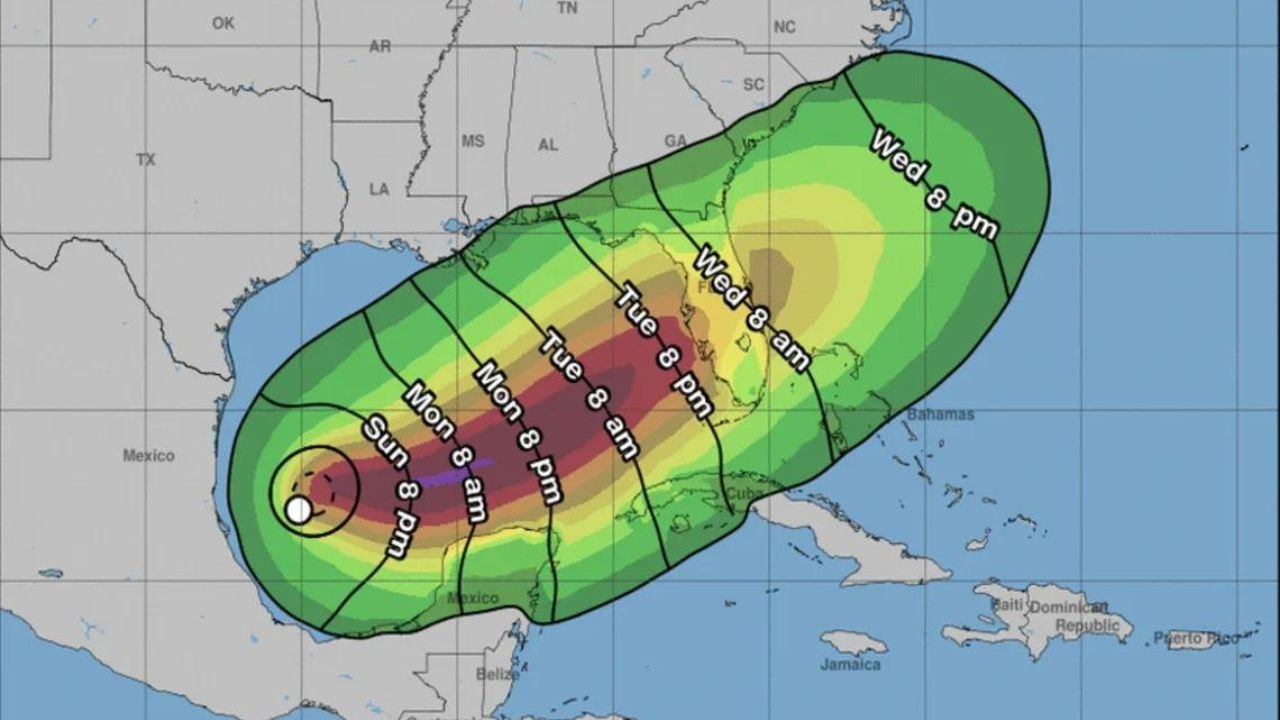Table of Contents
Prepare for Tropical Storm Milton as it threatens the South Carolina coast. Learn how to stay safe, protect your home, and track the storm’s path. South Carolina, still reeling from the devastation of Hurricane Helene, now faces another challenge. The National Weather Service (NWS) has issued warnings about Tropical Storm Milton, which is rapidly strengthening in the Gulf of Mexico and is forecasted to impact the South Carolina coast in the coming days. This storm, expected to intensify further, may bring major hurricane-force winds and life-threatening conditions.
Let’s dive into what’s happening, what to expect, and how residents can prepare for this next bout of severe weather.
Hurricane Helene: The Aftermath Still Lingers
Just over a week ago, Hurricane Helene made its destructive landfall on the South Carolina coast. Classified as a Category 4 hurricane at its peak, Helene brought widespread flooding, intense winds, and heavy rains that lashed both the Upstate and Midlands regions.
- Significant Damage: Helene left nearly 2 million South Carolinians without power.
- Loss of Lives: Tragically, 41 people in the state lost their lives, many due to falling trees. The Associated Press also reported that over 200 people across the impacted region lost their lives, with hundreds still unaccounted for.
As communities work tirelessly to recover, repair, and rebuild after Helene, the arrival of Tropical Storm Milton could not come at a more challenging time.

What We Know About Tropical Storm Milton
Milton’s Origin in the Gulf of Mexico
Tropical Storm Milton formed in the Gulf of Mexico, with the National Weather Service monitoring its development closely. As of Saturday afternoon, Milton’s winds had strengthened to around 40 miles per hour, with gusts reaching even higher speeds. However, it’s the storm’s potential to intensify further that has everyone on high alert.
Milton’s Expected Path and Strength
The NWS warns that Tropical Storm Milton could reach “major hurricane strength” by the time it makes landfall. While Florida’s west coast is expected to be hit first, South Carolina and Georgia are also in the storm’s trajectory. Coastal areas in particular need to be prepared for heavy rains, strong winds, and potential storm surges.
Timing and Potential Impact
Forecasts suggest that Milton could impact the South Carolina coast within the next few days. The most concerning factors include:
- High Winds: With the potential to reach major hurricane status, winds exceeding 74 mph could hit the region.
- Flooding: Given the already saturated ground from Helene’s rainfall, the likelihood of flooding is significantly higher.
- Storm Surge: Low-lying coastal areas will face increased risks from storm surges, which could inundate homes and businesses.
Comparison of Helene and Milton: A Double Blow
Having just endured Helene’s fury, the prospect of Tropical Storm Milton leaves many residents with a sense of déjà vu. While Helene’s Category 4 intensity was devastating, Milton’s rapidly strengthening nature could also result in serious damage. South Carolinians should brace for similar challenges: power outages, flooding, and the potential need for evacuations.
Helene’s Devastation
- Rainfall and Flooding: Helene brought relentless rainfall that caused rivers to overflow and neighborhoods to flood.
- Wind Damage: Trees and powerlines were knocked down, causing widespread power outages that impacted millions.
Milton’s Potential
- Heavy Rainfall: Milton is expected to dump even more rain on already saturated areas, increasing the flood risk.
- High Winds: With the potential for strong winds, South Carolina’s already weakened infrastructure may suffer further damage.

How to Prepare for Tropical Storm Milton
As Milton approaches, it’s crucial to take precautions to ensure the safety of you and your family. Here are some steps to prepare:
1. Stay Informed
Regularly check updates from trusted sources like the National Weather Service and local news. Being aware of the storm’s path and any evacuation orders is critical.
2. Secure Your Home
- Board Up Windows: Protect your windows with storm shutters or plywood to prevent glass breakage from flying debris.
- Clear Gutters: Make sure gutters are free from debris to avoid water buildup that could lead to leaks.
- Remove Outdoor Objects: Bring in any outdoor furniture, tools, or decorations that could become dangerous projectiles in high winds.
3. Prepare an Emergency Kit
Your emergency kit should include:
- Bottled water (enough for several days)
- Non-perishable food
- Flashlights with extra batteries
- First-aid supplies
- Important documents in a waterproof container
- Medications and personal hygiene items
4. Plan for Evacuations
If you live in a low-lying area or near the coast, familiarize yourself with evacuation routes. Have a plan in place in case you need to leave quickly, and consider staying with friends or family further inland.
5. Protect Your Vehicle
Move vehicles to higher ground if flooding is expected, and avoid parking under trees that could fall during the storm.
Read More: Everything You Need to Watch Texas A&M vs. Missouri: TV Channel, Time & Week 6 Breakdown
Evacuations and Shelter Resources
In anticipation of severe weather, evacuation orders may be issued for coastal and low-lying areas. If you’re in an evacuation zone, it’s important to leave as soon as the order is given. Local officials will provide information on available shelters.
Where to Find Shelters
You can check for open shelters via the American Red Cross or local emergency management websites. Many shelters are equipped to handle pets, but it’s a good idea to confirm this before arriving.
What to Bring to a Shelter
- Personal identification
- Bedding (pillows, blankets)
- Food and water for at least 24 hours
- Medications
- Face masks and hand sanitizer
Power Outages: What to Expect
With high winds and the potential for falling trees, power outages are likely. Here’s how to prepare for them:
1. Stock Up on Supplies
Make sure you have enough non-perishable food, water, and medical supplies to last for several days.
2. Charge Devices
Fully charge your cell phones and any portable battery packs in advance. You may also want to invest in a car charger for your phone in case of an extended power outage.
3. Use Generators Safely
If you plan to use a generator during a power outage, remember to run it outside and away from windows to prevent carbon monoxide poisoning.
Read More: Grey Anatomy Season 21 Netflix Release Date: What We Know
What’s Next? Preparing for Life After the Storm
While preparing for the storm is essential, so is planning for the aftermath. Here’s what to consider:
1. Cleanup and Recovery
After the storm passes, expect downed trees, debris, and potential flood damage. It’s important to wait for local authorities to declare the area safe before beginning cleanup efforts.
2. Insurance Claims
Take photos of any damage to your home, vehicles, or property and contact your insurance company as soon as possible.
3. Help Your Neighbors
Check on neighbors, especially those who are elderly or have mobility issues, to ensure they’re safe and have the supplies they need.
Conclusion: Prepare, Don’t Panic
Tropical Storm Milton, though still in its early stages, is a serious threat to South Carolina’s already storm-weary coast. As residents continue to recover from Hurricane Helene, it’s crucial to stay informed, prepare, and act quickly if evacuation orders are issued. By taking the necessary precautions now, we can minimize the risks and keep our families safe.
FAQs
1. How is Tropical Storm Milton different from Hurricane Helene?
Tropical Storm Milton is still developing but is expected to intensify into a major hurricane. Hurricane Helene was a Category 4 storm when it hit, but both storms have the potential for severe flooding and wind damage.
2. When will Tropical Storm Milton make landfall?
Milton is expected to impact the South Carolina coast in the next few days, with Florida likely to be hit first. Keep an eye on local weather updates for precise timing.
3. Should I evacuate for Tropical Storm Milton?
If you’re in a coastal or flood-prone area, you may be advised to evacuate. Follow guidance from local officials and have a plan in place.
4. How can I protect my home from the storm?
Secure windows, clear gutters, bring in outdoor furniture, and remove any items that could become airborne during the storm. Also, stock up on emergency supplies.
5. What should I do if I lose power during the storm?
Have a backup generator if possible and ensure all devices are fully charged. Keep flashlights handy, and avoid using candles to reduce the risk of fire.

